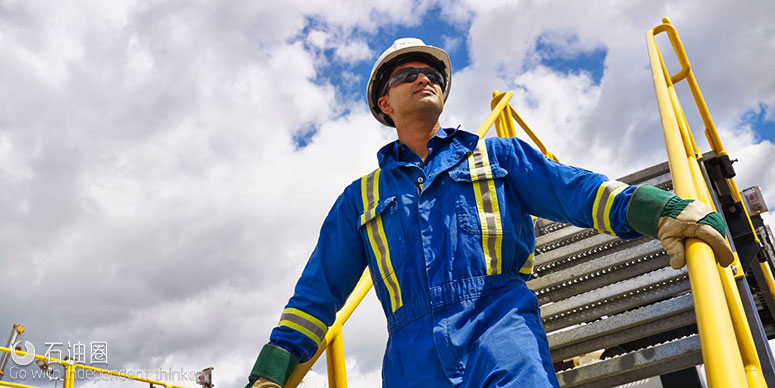
井眼清洁是影响成功钻井的关键因素之一。岩屑运移困难会带来一系列复杂的问题,如卡钻、钻速降低等。一口井的井眼清洁状况会直接影响到这口井的井身质量等,进而影响到其经济效益。油井洗井工作是采油队日常管理工作的重工作之一,洗井质量也是影响泵况的一个主因素。
上期石油圈,小编介绍了来自贝克休斯洗井服务的一部分,包括Tornado连续油管清洗系统和Roto-Jet喷射工具。本期石油圈将继续对该洗井服务中的Sand-Vac和Well-Vac井眼清洗系统,以及整个洗井服务的现场应用案例进行分析介绍。石油圈原创www.oilsns.com
Sand-Vac和Well-Vac井眼清洗系统
去除超低压井筒中的固体碎屑和有害液体。
清除固相和液相有害物石油圈原创www.oilsns.com
贝克休斯Sand-Vac™和Well-Vac™系统使用同心连续油管(CCT),结合专有的井下可切换式喷射泵,清除超低压井中那些用标准清洗方法无法处理的固相和液相有害物。这些清洗系统将有害液体与储层隔离,在不使用氮气的情况下连续返出地面。对于那些需要大量使用氮气,而又存在氮气供应、物流或平台甲板空间受限等相关问题的洗井作业,贝克休斯的解决方案具有独特优势。
这些工具用于大位移生产井,可以处理常规循环清洗方式无法解决的横向流,或者漏失带的问题。可以在这些工具中加入内置的压力和温度计,以收集准确的井下数据。
清洗系统结合使用CCT及专有的井下可切换式喷射泵来去除固相和液相有害物:从连续油管的内管泵送液体,在喷嘴处形成局部压力降,形成的真空将井内流体和夹带的固体碎屑携带出井。
单次入井完成所有目标石油圈原创www.oilsns.com
系统入井后,可以在多种操作模式之间切换,以确保单次入井完成所有目标。
Sand-Vac模式可以在不使用氮气的情况下清除井内固体颗粒。Well-Vac模式增大局部压降,使井筒流体、钻井泥浆、压裂液及其他来自储层的流体形成真空。高压喷射模式,使流体从高压喷嘴喷出,以清除胶结疏散的砂桥,或泵送增产流体。石油圈原创www.oilsns.com
混合后的流体进入喷射泵扩散口,并恢复喷嘴处的压力,使返出的流体沿CCT环空返回地面。该系统使用单相流体,与使用氮化液体进行清洗作业相比,能够简化物流,降低成本。
应用范围石油圈原创www.oilsns.com
超低压油藏;石油圈原创www.oilsns.com
大位移井及水平产层;
井眼清洗和清理;石油圈原创www.oilsns.com
生产井调剖;石油圈原创www.oilsns.com
重油和出砂井;石油圈原创www.oilsns.com
由于成本和物流,氮气使用受限的作业地区。
特点和优点石油圈原创www.oilsns.com
- 多种操作模式:石油圈原创www.oilsns.com
– Sand-Vac模式:石油圈原创www.oilsns.com
- 单次入井清除砂和固体颗粒
– Well-Vac模式:石油圈原创www.oilsns.com
- 使钻井泥浆、增产液和其他油藏流体形成真空;
- 满足生产流入曲线。石油圈原创www.oilsns.com
–高压喷射模式:
- 穿透硬质砂桥;石油圈原创www.oilsns.com
- 实现增产流体的有效注入。
- 由贝克休斯CIRCA软件提供支持:
– 通过提供精确的作业设计、模拟、工具设置和安全操作指导,优化作业时间。
- 无需氮气:石油圈原创www.oilsns.com
– 避免物流相关问题;
– 降低成本。石油圈原创www.oilsns.com
向前和向后的喷嘴使固体颗粒液态化,然后被安装了滤网的工具段吸入,通过CCT环孔返回地面。
悬链线式CCT Sand-Vac解决方案首次应用,产量超过目标值185%
坐标:中国南海,马来西亚
技术挑战石油圈原创www.oilsns.com
- 4口井的出砂量太大,影响产量,阻碍了地层流体与下部完井段的流动通道;
- 井已经停产了几年;
- 井底压力较低;
- 平台空间和吊装作业受限;
- 只有自升式平台可用。
解决方案石油圈原创www.oilsns.com
贝克休斯采用Sand-Vac清洁系统清除岩屑,结合先进的无线悬链线式CCT,利用独特的CT连接器进行打捞、开关滑套等常规作业。
应用结果石油圈原创www.oilsns.com
采用Baker Hughes的洗井解决方案后,作业者从4口井中共回收了15,650磅砂,单次入井回收11,900磅;同时,该作业清楚了井内大量砂,产量超过目标值185%,同时创造了112天零事故作业记录。
来自/Baker Hughes 译者/白小明 编辑/Leia
Sand-Vac and Well-Vac Well Cleanout Systems
Remove solids and liquids from ultra-low-pressure wellbores
Remove solids and liquids
The Baker Hughes Sand-Vac™ and Well-Vac™ systems use concentric coiled tubing (CCT) combined with a proprietary downhole switchable jet pump to remove solids and liquids from ultra-low-pressure wellbores that are not treatable with standard circulating methods. These cleanout systems isolate the fluids from the reservoir and allow continuous returns without the use of nitrogen. This is particularly advantageous for cleanout operations that require significant amounts of nitrogen or have issues related to supply, logistics, or platform deck space.
Used in extended-length producing intervals, these systems handle crossflow or thiefzone challenges that hamper conventional circulation cleanouts. The tools also incorporate optional built-in pressure and temperature memory gauges to collect accurate downhole data.
The cleanout systems use CCT combined with a proprietary downhole switchable jet pump to remove solids and liquids. Liquid pumped down the inner coiled tubing string through the jet pump nozzle creates a localized pressure drop that essentially vacuums out wellbore fluids and entrained solids.
Meet objectives in a single run
While deployed in the well, the system can be switched between multiple operating modes to achieve all of your objectives in a single run.
The Sand-Vac mode removes wellbore solids without using nitrogen. The Well-Vac mode increases the localized pressure drawdown to vacuum wellbore fluids, drilling mud, stimulation fluids, and other liquids from the reservoir. A high-pressure jetting mode diverts all fluids through high-pressure nozzles to remove consolidated sand bridges or pump stimulation fluids.
The combined flow enters the jet pump diffuser and recovers pressure from the nozzle to drive the return fluids to the surface via the CCT annulus. This system uses a single-phase fluid that enables the cleanout to be performed with simplified logistics and reduced costs when compared with circulating nitrified fluids.
Applications
- Ultra-low-pressure reservoirs
- Extended-length and horizontal producing intervals
- Well cleanup and unloading
- Production profiling
- Heavy-oil and sand-producing wells
- Operating areas that are constrained in the use of nitrogen due to costs and logistics
Features and benefits
- Multiple operating modes
– Sand-Vac mode
• Removes sand and solids in a single run
– Well-Vac mode
• Vacuums drilling mud, stimulation fluids, and other reservoir fluids
• Enables production inflow profiling
– High-pressure jetting mode
• Passes through hard sand bridges
• Enables effective stimulation fluids placement
- Powered by Baker Hughes CIRCA software
– Optimizes time on location by providing accurate job design, simulation, tool setup, and safe operating guidelines
- Nitrogen not required
– Eliminates logistical problems
– Reduces costs
Forward- and rear-facing jets fluidize solids, which are then sucked through a screen section and sent to the surface via the CCT annulus.
First-Time Catenary CCT Sand-Vac Solution Exceeded Production Target By 185%
Malaysia, South China Sea
Results
- Recovered 15,650 lb of sand from four wells, with 11,900 lb being recovered in a single run
- Removed enough sand from the wellbores to surpass target production by 185%
- Recorded 112 days of incident-free operations
Challenges
- High sand production in all four wells prohibited production and access to producing zones in the lower completion
- Wells had been shut in for several years
- Low bottomhole pressures
- Restricted platform access and crane capabilities
- Jack-up boat availability
Baker Hughes Solution
- Deployed Sand-Vac cleanout system to remove debris
- Used advanced wireless catenary-style CCT
- Designed and built specialized CT connector to enable conventional operations like fishing and sleeve manipulation.
未经允许,不得转载本站任何文章:

 石油圈
石油圈
